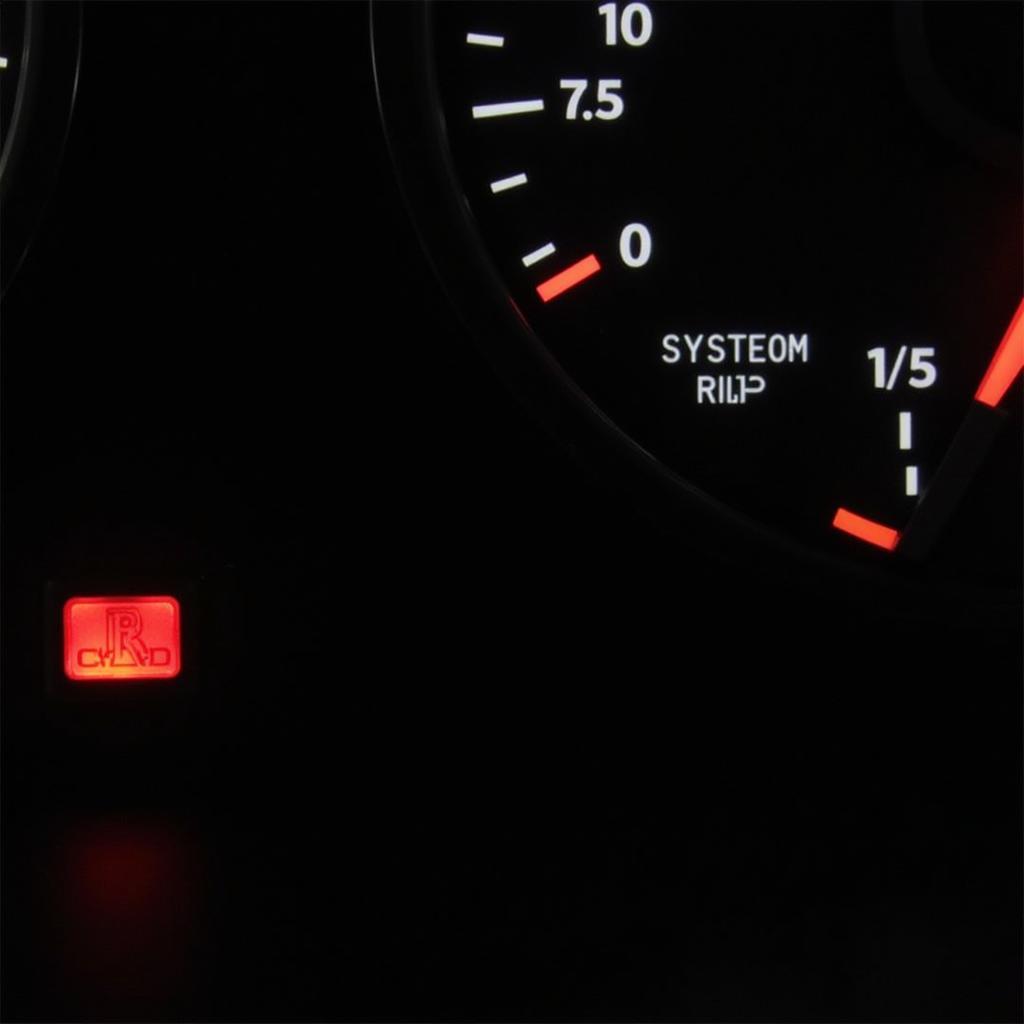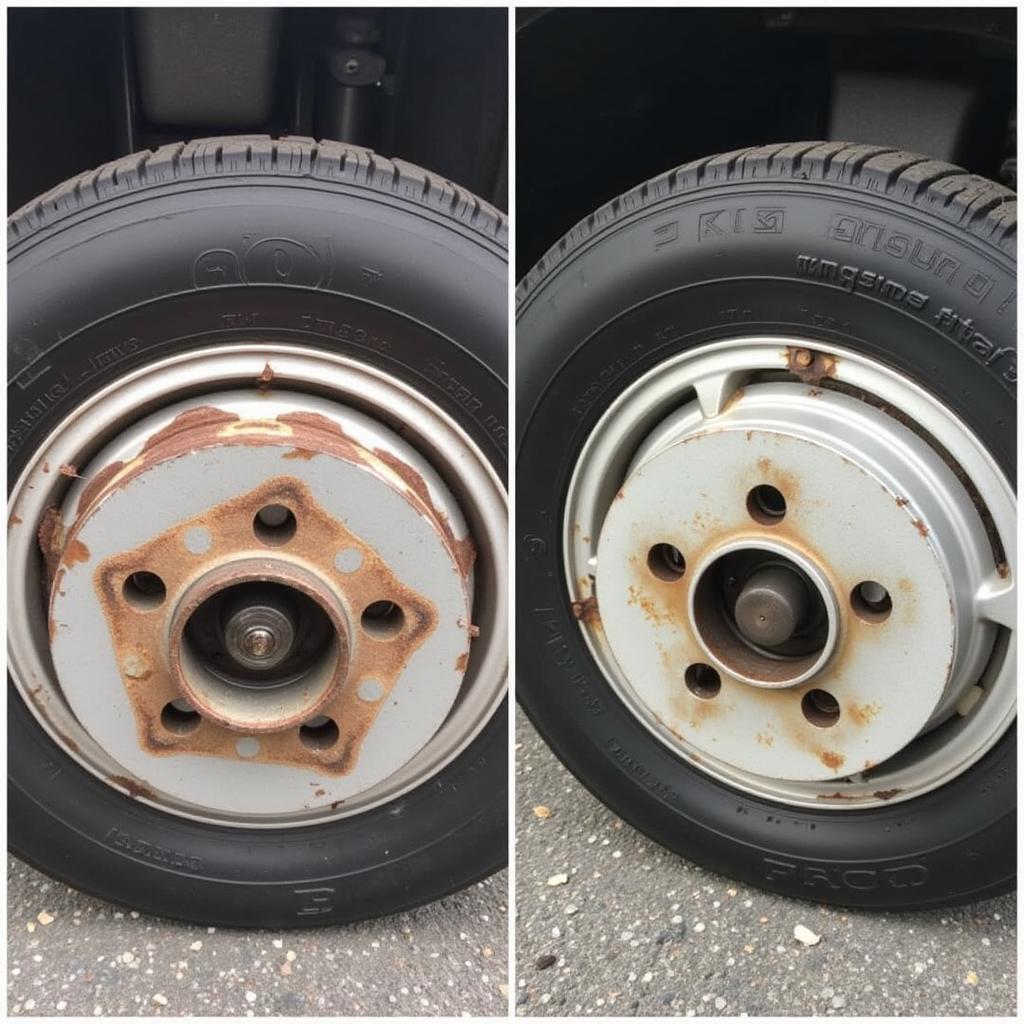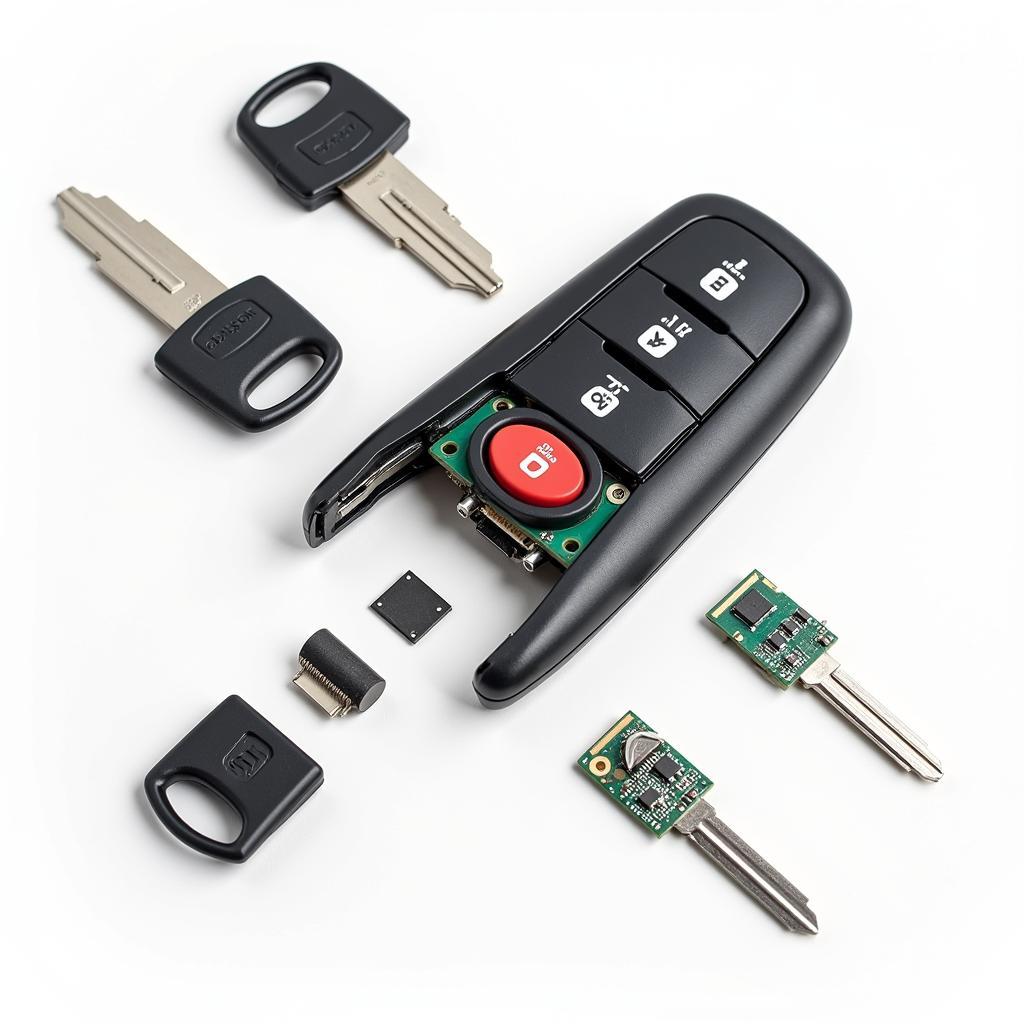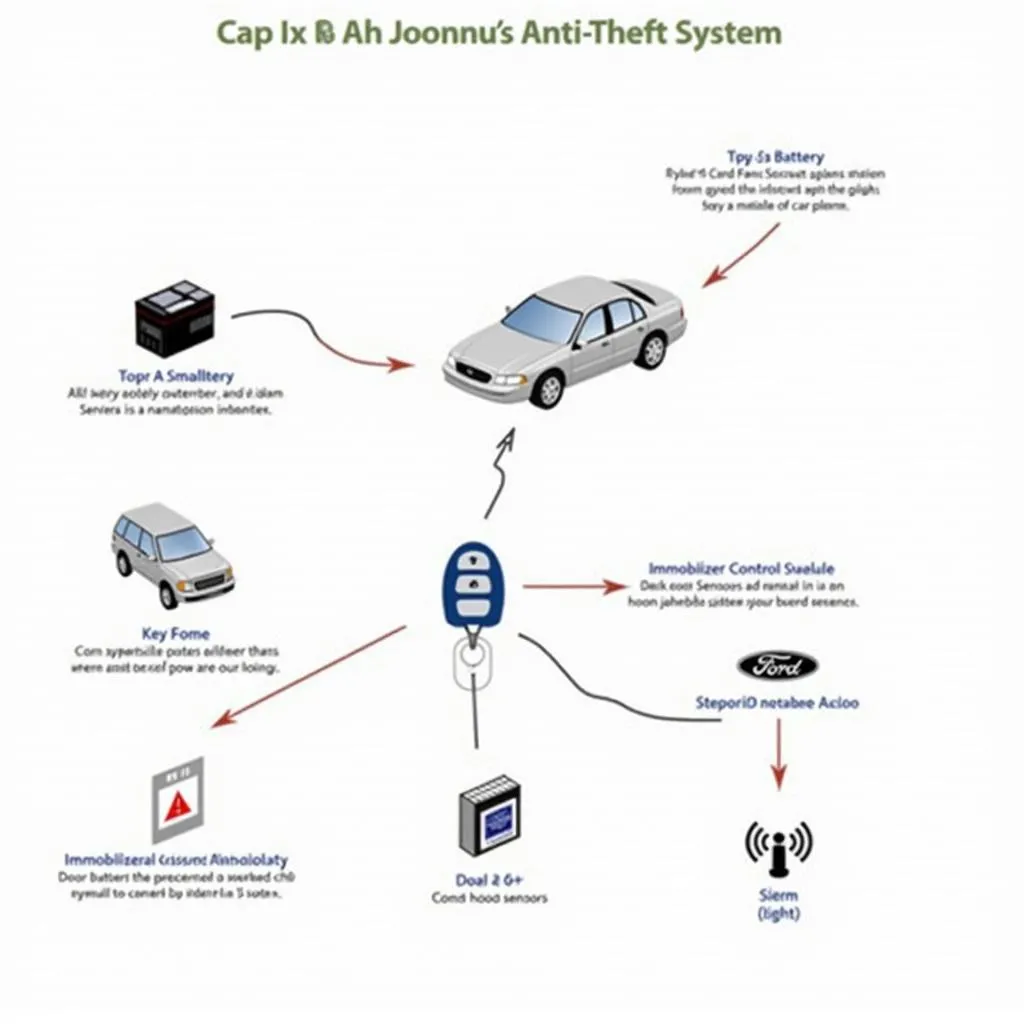The brake warning light on your 2001 Lexus ES300 is a crucial safety feature, designed to alert you to potential problems within the braking system. When this light illuminates on your dashboard, it’s essential not to ignore it. It could signal anything from a simple issue like low brake fluid to a more complex problem requiring immediate attention. This comprehensive guide will explore common causes behind a lit brake warning light on your 2001 Lexus ES300 and provide potential solutions to help you get back on the road safely.
 2001 Lexus ES300 Dashboard with Illuminated Brake Warning Light
2001 Lexus ES300 Dashboard with Illuminated Brake Warning Light
Common Causes of a Lit Brake Warning Light
Low Brake Fluid Level
One of the most common reasons for the brake warning light to illuminate is low brake fluid. Brake fluid is the lifeblood of your car’s braking system, transmitting the force from your foot on the brake pedal to the wheels, ultimately stopping the vehicle. Over time, brake fluid levels can naturally decrease, or a leak in the system can cause a sudden drop.
How to Check and Top Up Brake Fluid:
- Locate the brake fluid reservoir: This is usually a translucent plastic container situated on the driver’s side of the engine bay.
- Check the fluid level: The reservoir will have “MIN” and “MAX” lines. Ensure the fluid level sits between these lines.
- Add brake fluid if necessary: If the level is low, carefully remove the reservoir cap and add the correct type of brake fluid specified in your owner’s manual.
- Check for leaks: If you need to add brake fluid frequently, it indicates a leak that needs immediate professional attention.
Worn Brake Pads
Brake pads are designed to wear down over time as you use your brakes. When they become too thin, the brake warning light will illuminate to alert you it’s time for a replacement. Driving with worn brake pads significantly reduces your stopping power, putting you and others at risk.
 Worn Brake Pads on a 2001 Lexus ES300
Worn Brake Pads on a 2001 Lexus ES300
Faulty Brake Pad Sensor
Many modern cars, including the 2001 Lexus ES300, are equipped with brake pad wear sensors. These sensors are small metal tabs embedded within the brake pad material. As the brake pad wears down, the sensor is exposed and makes contact with the brake rotor, completing an electrical circuit and triggering the brake warning light. A faulty or damaged sensor can also trigger the light prematurely.
Issues with the ABS System
Your Lexus ES300 has an Anti-lock Braking System (ABS) designed to prevent wheel lockup during hard braking. A malfunctioning ABS system can trigger the brake warning light.
Common ABS Issues:
- Faulty ABS Wheel Speed Sensors: These sensors monitor the speed of each wheel and send information to the ABS control module. A faulty sensor can disrupt the system.
- ABS Module Problems: The ABS module is the brain of the system. If it malfunctions, it can lead to various braking issues.
Diagnosing and repairing ABS problems often requires specialized equipment and expertise.
What to Do When the Brake Warning Light Comes On
If the brake warning light illuminates while driving:
- Stay Calm: Don’t panic. Pull over to a safe location as soon as possible.
- Check Brake Fluid: Carefully inspect the brake fluid level. If it’s low, cautiously add fluid as a temporary measure.
- Assess Brake Pedal Feel: Does the pedal feel spongy or go closer to the floor than usual? This could indicate a serious issue.
- Seek Professional Help: If you notice any unusual brake behavior or are unsure about the cause of the warning light, it’s best to err on the side of caution. Have your car towed to a trusted mechanic or dealership for diagnosis and repair.
Remote Diagnostics and Programming: A Modern Solution
In today’s technologically advanced world, remote diagnostics and programming offer a convenient and efficient way to diagnose and address car issues, including those related to the brake system.
How Remote Services Work:
- Connection: Your car is connected to a remote diagnostic tool through a specialized device plugged into the OBD-II port.
- Data Retrieval: The tool accesses your car’s computer system, retrieving diagnostic trouble codes (DTCs) and live data streams.
- Expert Analysis: Highly skilled technicians analyze the data to identify the root cause of the problem.
- Software Updates & Programming: If the issue is software-related, remote programming can update your car’s software to the latest version, potentially resolving the problem without a physical visit to the mechanic.
Benefits of Remote Diagnostics and Programming:
- Convenience: No need to visit a repair shop, saving you time and hassle.
- Faster Diagnosis: Remote tools can quickly retrieve diagnostic information, leading to quicker identification of the problem.
- Cost-Effective: In some cases, remote repairs can be more affordable than traditional methods.
- Software Updates: Ensures your car’s software is up-to-date for optimal performance.
Remember, while remote diagnostics and programming offer significant advantages, not all brake issues can be solved remotely. Physical inspections and repairs may still be necessary depending on the complexity of the problem.
Conclusion
A lit brake warning light on your 2001 Lexus ES300 is a serious safety concern that should never be ignored. While low brake fluid or worn brake pads are common culprits, other factors like a faulty ABS system could be at play. Regular maintenance, timely brake inspections, and addressing warning signs promptly are crucial to ensuring your Lexus ES300’s braking system remains in optimal condition, providing you with safe and reliable stopping power for years to come. Consider exploring remote diagnostics and programming options for a convenient and efficient approach to diagnosing and resolving car issues, including those related to your brake system.


